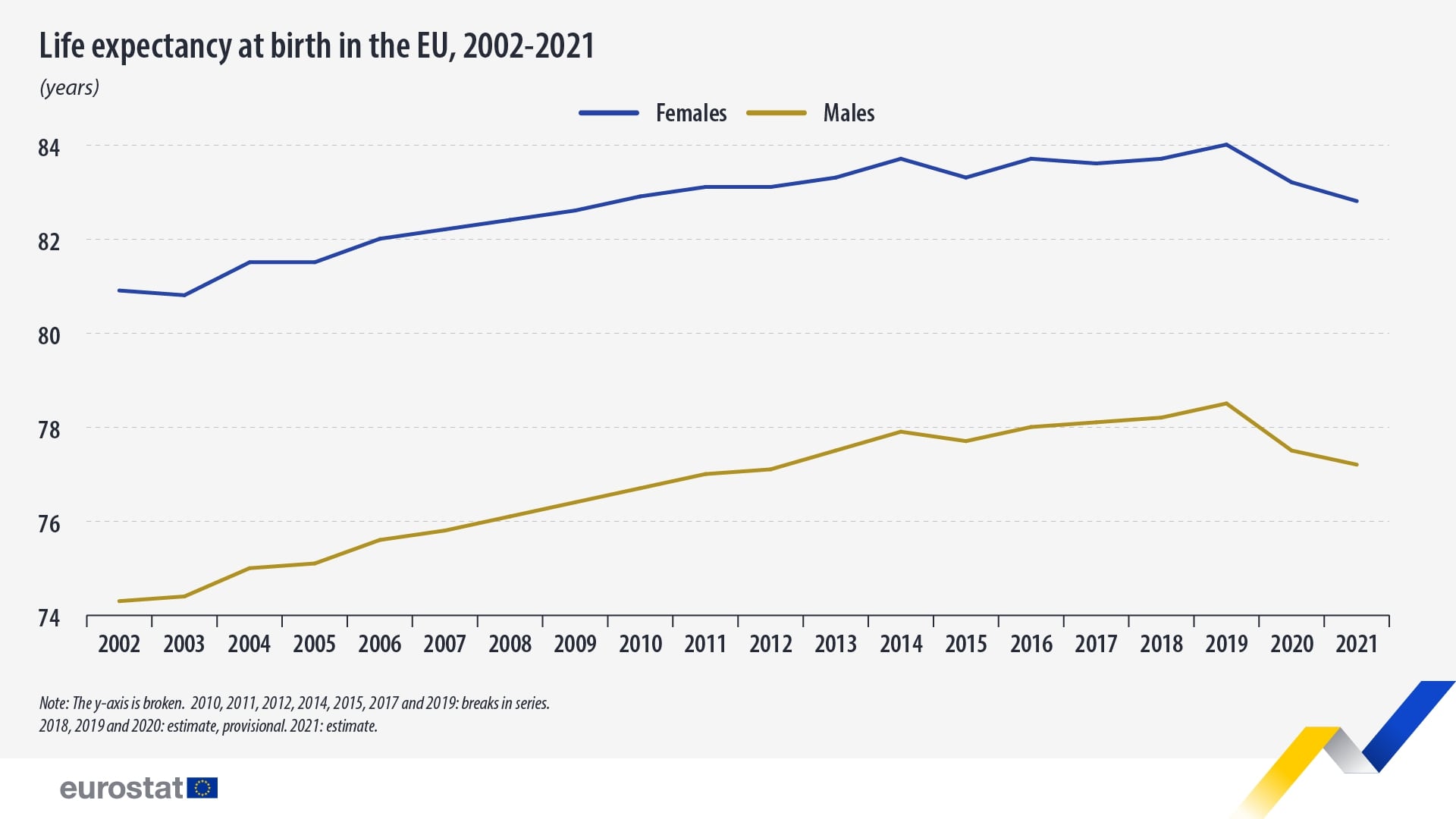Thessaloniki gets ready for its metro launch in November
The underground rapid transit lines have been under construction for almost two decades due to various project delays
 TheMayor.EU logo
TheMayor.EU logo Find out which European region has the highest longevity, and which one the lowest
Eurostat, EU’s statistical agency, released its annual life expectancy report, which showed that for the year 2021, the parameters for that factor have dropped for a second year running due to the COVID pandemic.
The global viral pandemic has put a dent in what used to be a consistently upward trend since official measurements of life expectancy for the EU started being measured in 2002. In 2021, the life expectancy at birth in the EU was 80.1 years, whereas, at the highest point in 2019, it reached 81.3 years. Overall, that means that COVID has robbed Europeans of more than a year of their lives.
Since the start of the century, European life expectancy has increased by 2.5 years, from 77.6 to 80.1 years, on average. That gain was attributed to a multitude of factors, such as reduced infant mortality, improved public health care, rising living standards and better education and awareness of health factors.

Women consistently have higher life expectancy than men in the EU. Source: Eurostat
It seems, however, that after Covid, some ground has been lost and needs to be recovered in order to resume back on the upward track of longevity.
In 2021, the regions in the EU with the highest levels of life expectancy at birth were located in Spain, Italy and France. That itself boosts the appeal of the Mediterranean diet, although it is likely not the only factor that mattered.
In fact, the European region, whose residents have the highest life expectancy at birth in 2021, was Madrid – with 84.8 years, well above the EU average.
On the other hand, the EU regions with the lowest life expectancy at birth were all in Bulgaria: North-West (69.7), North-Central (70.4), South-East (71.0) and North-East (71.2). The Balkan country was severely affected both by the COVID pandemic and by a general reluctance to vaccination on part of its population.

The underground rapid transit lines have been under construction for almost two decades due to various project delays

Now you can get your wine in Talence by paying directly in Bitcoin

That’s because the state has to spend money on updating the railway infrastructure rather than subsidizing the cost of the popular pass

Rethinking renewable energy sources for the urban landscape

The examples, compiled by Beyond Fossil Fuels, can inform and inspire communities and entrepreneurs that still feel trepidation at the prospect of energy transition

Now you can get your wine in Talence by paying directly in Bitcoin

The 10th European Conference on Sustainable Cities and Towns (ESCT) sets the stage for stronger cooperation between the EU, national and local level to fast track Europe's transition to climate neutrality.

At least, that’s the promise made by the mayor of Paris, Anne Hidalgo

The underground rapid transit lines have been under construction for almost two decades due to various project delays

At least, that’s the promise made by the mayor of Paris, Anne Hidalgo

Hostal de Pinós is located in the geographical centre of the autonomous region

Despite its church-y name, the district has long been known as the hangout spot for the artsy crowds

Urban dwellers across the EU are having a say in making their surroundings friendlier to people and the environment.

Forests in the EU can help green the European construction industry and bolster a continent-wide push for architectural improvements.

Apply by 10 November and do your part for the transformation of European public spaces

An interview with the Mayor of a Polish city that seeks to reinvent itself

An interview with the newly elected ICLEI President and Mayor of Malmö

A conversation with the Mayor of Lisbon about the spirit and dimensions of innovation present in the Portuguese capital














